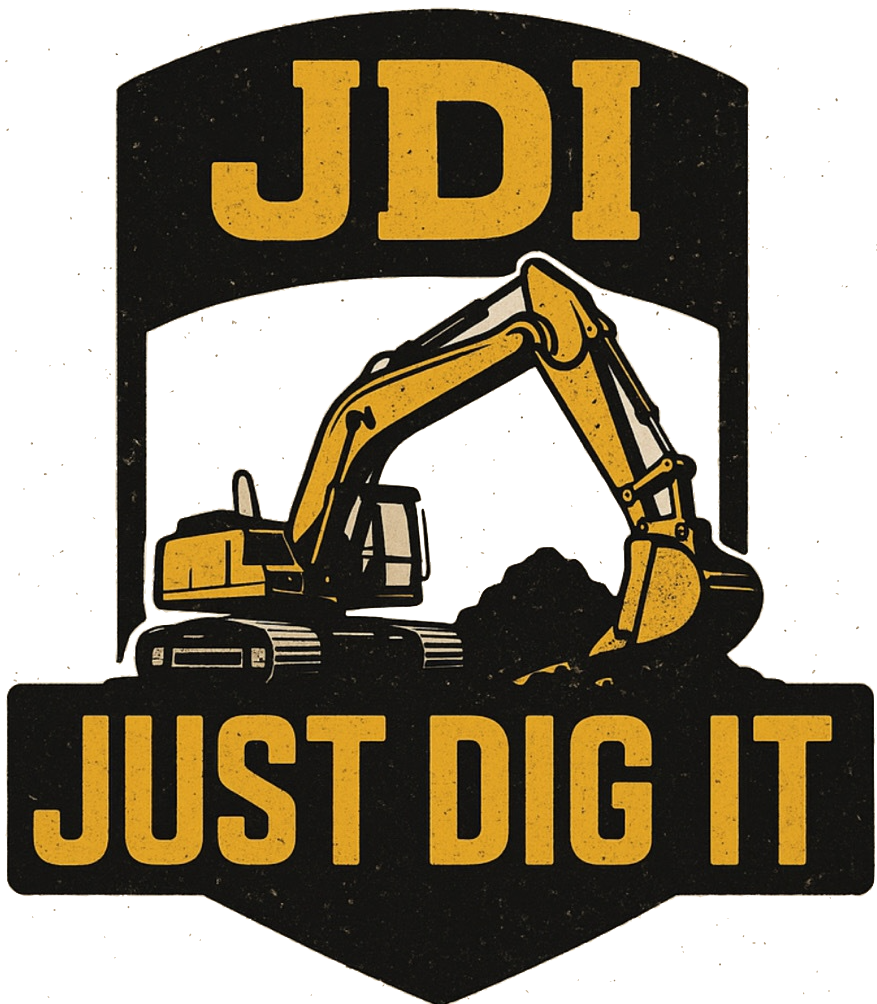Foundation Digs: 5 Mistakes to Avoid Before Pouring Concrete
The success of any building starts underground. Before walls go up or slabs are poured, the foundation has to be right—and that starts with the dig.
Improper excavation can lead to cracked concrete, drainage issues, and costly structural repairs. At Just Dig It, we’ve prepped foundations for hundreds of builds, and we’ve seen what can go wrong when a site isn’t dug with care, precision, and planning.
In this post, we’ll break down the five most common foundation digging mistakes—and how to avoid them—so you can protect your project from the ground up.
Why Foundation Digs Matter So Much
Before we get into mistakes, let’s talk about why this part of your project is so critical.
Foundation excavation does more than just “move dirt.” It sets the elevation, defines the footprint, and supports the load of your entire structure. Done right, it prevents future issues with settling, cracking, or poor drainage. Done wrong, and you’re looking at expensive rework or even structural damage down the road.
Bottom line? A good dig equals a good pour.
Mistake #1 – Not Reviewing Plans with Your Excavation Contractor
One of the biggest problems we see is when builders or property owners don’t clearly communicate the build plans to the excavation team.
This can lead to:
- Trenches being too shallow or deep
- Incorrect layout or overdig
- Pad heights that don’t match finished grades
- Drainage problems around the foundation
Avoid It:
Always review blueprints, pad elevations, and layout dimensions with your excavation contractor before they start. Share any grade marks or reference points the builder has provided. Walk the site together and make sure everyone’s on the same page.
Mistake #2 – Ignoring Drainage and Slope During the Dig
Even if your foundation is perfectly level, water can still become a major issue if the surrounding grade isn't considered. Poor slope can lead to:
- Water pooling around the foundation
- Moisture seeping into basements or crawlspaces
- Erosion of backfill or subgrade materials
Avoid It:
Make sure the site is graded to direct water away from the foundation. We recommend at least a gentle slope (even if minimal) for proper drainage. If you're working on a hillside or tight lot, drainage planning is even more important—don’t overlook it.
Mistake #3 – Overdigging Without a Purpose
Digging too wide or too deep can cause more harm than good:
- Wasted labor and hauling costs
- Difficulty setting forms to spec
- Risk of backfill shifting over time
Some overdig is necessary (especially for access or formwork), but excessive excavation leads to unstable foundations and higher material costs.
Avoid It:
Use equipment that matches the job size and only dig to the dimensions and depth required—plus just enough space for form setting or footing layout. A skilled operator can balance precision with efficiency.
Mistake #4 – Not Compacting or Inspecting Subgrade
It’s tempting to think that once the dirt is out, you’re ready to pour—but that’s not always the case.
Loose or soft subgrade beneath a footing or slab can cause the concrete to settle, crack, or even break under load. This is especially true in areas with clay or silty soils.
Avoid It:
Inspect and compact the bottom of your excavation before any rebar or formwork is set. If the soil is soft or unstable, you may need to remove it and replace it with engineered fill or gravel base.
We always recommend a quick compaction test or walk-over inspection to verify stability.
Mistake #5 – Poor Communication with the Concrete Crew
Excavation and concrete need to work hand-in-hand. If your excavation team and concrete crew aren’t in sync, it can result in:
- Wrong trench depth for footings
- Inconsistent pad height
- Delays or formwork adjustments on pour day
Avoid It:
Have your excavation contractor coordinate directly with whoever is pouring the footings or slab. If that’s you, your builder, or a concrete sub, make sure layout stakes and elevations are clear and easy to follow.
At Just Dig It, we often connect with the flatwork or footing team directly to avoid confusion and keep jobs moving smoothly.
Bonus Tip – Always Double Check Local Code
Before you break ground, be sure your dig follows all local building codes. This can include:
- Minimum footing depths
- Slope stability requirements
- Frost line depths
- Soil type considerations
Permits and inspections may be required before pouring concrete—especially for basements, retaining walls, or structural foundations.
What a Great Foundation Dig Should Look Like
When done right, your excavation site should be:
- Clean and to spec
- Clearly marked and accessible
- Sloped for proper drainage
- Compacted and stable
- Ready for footings, rebar, or forms without delay
At Just Dig It, we leave every foundation site ready for pour—with no guesswork and no loose ends.
Schedule Your Foundation Dig with Just Dig It
If you’re building a home, garage, shop, or slab structure in Utah, we’d love to handle the dig. We show up when we say we will, dig to plan, and coordinate with your builder or concrete team to make sure everything goes off without a hitch.
Call (801) 793-5585 or click here to request an estimate. We’ll walk your site, review your plans, and give you a clear, fast quote.
Let’s start strong—by digging smart.

